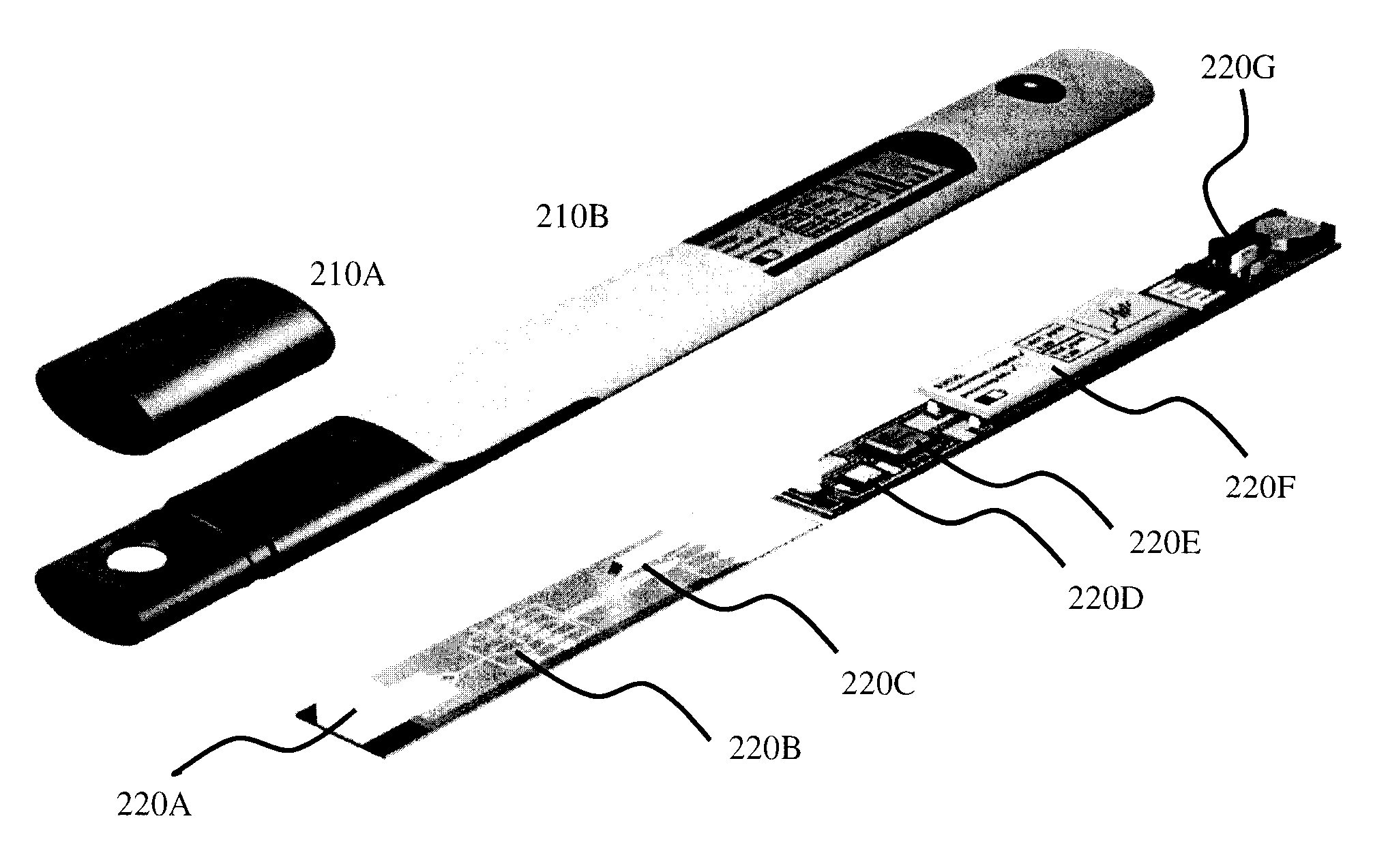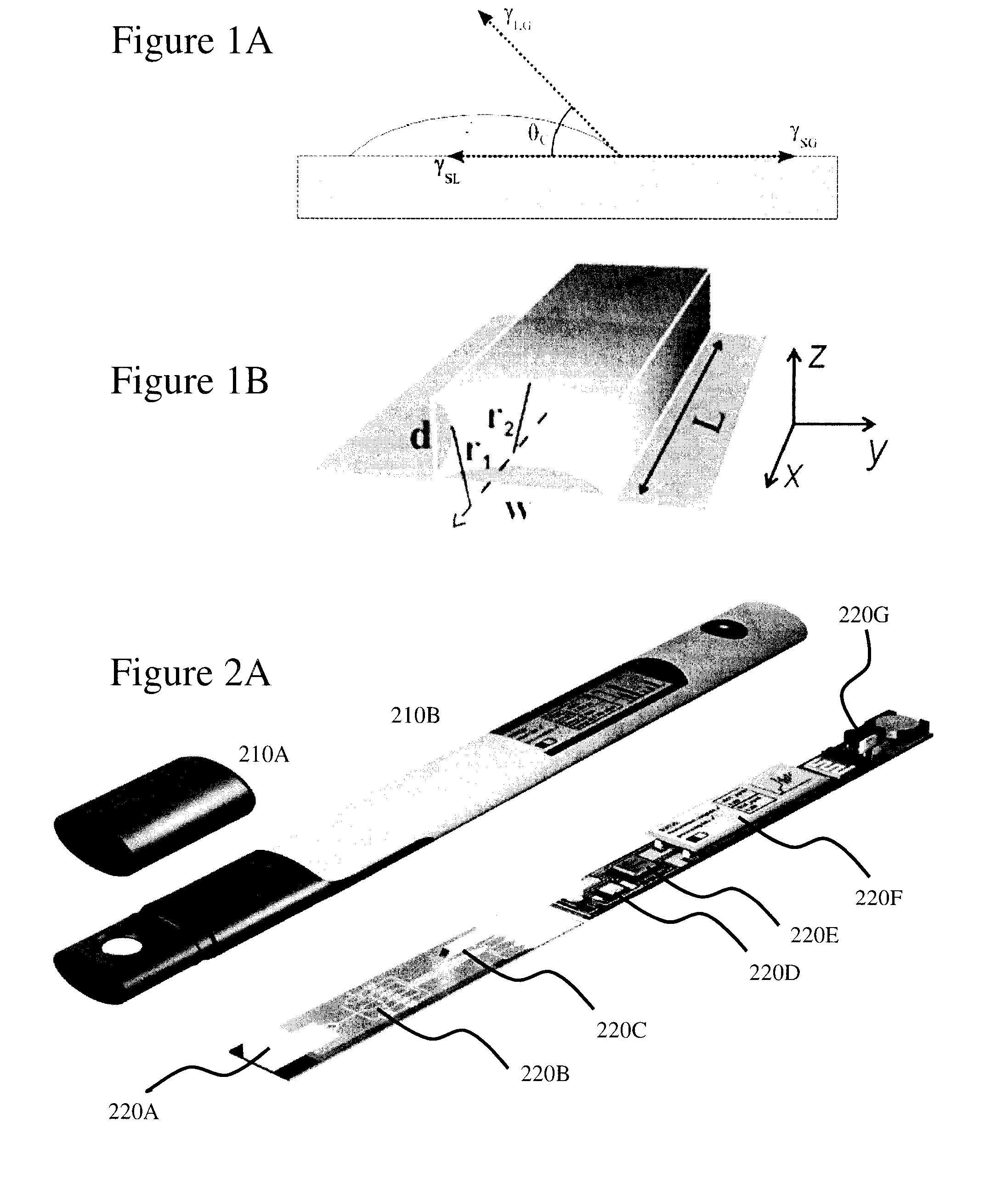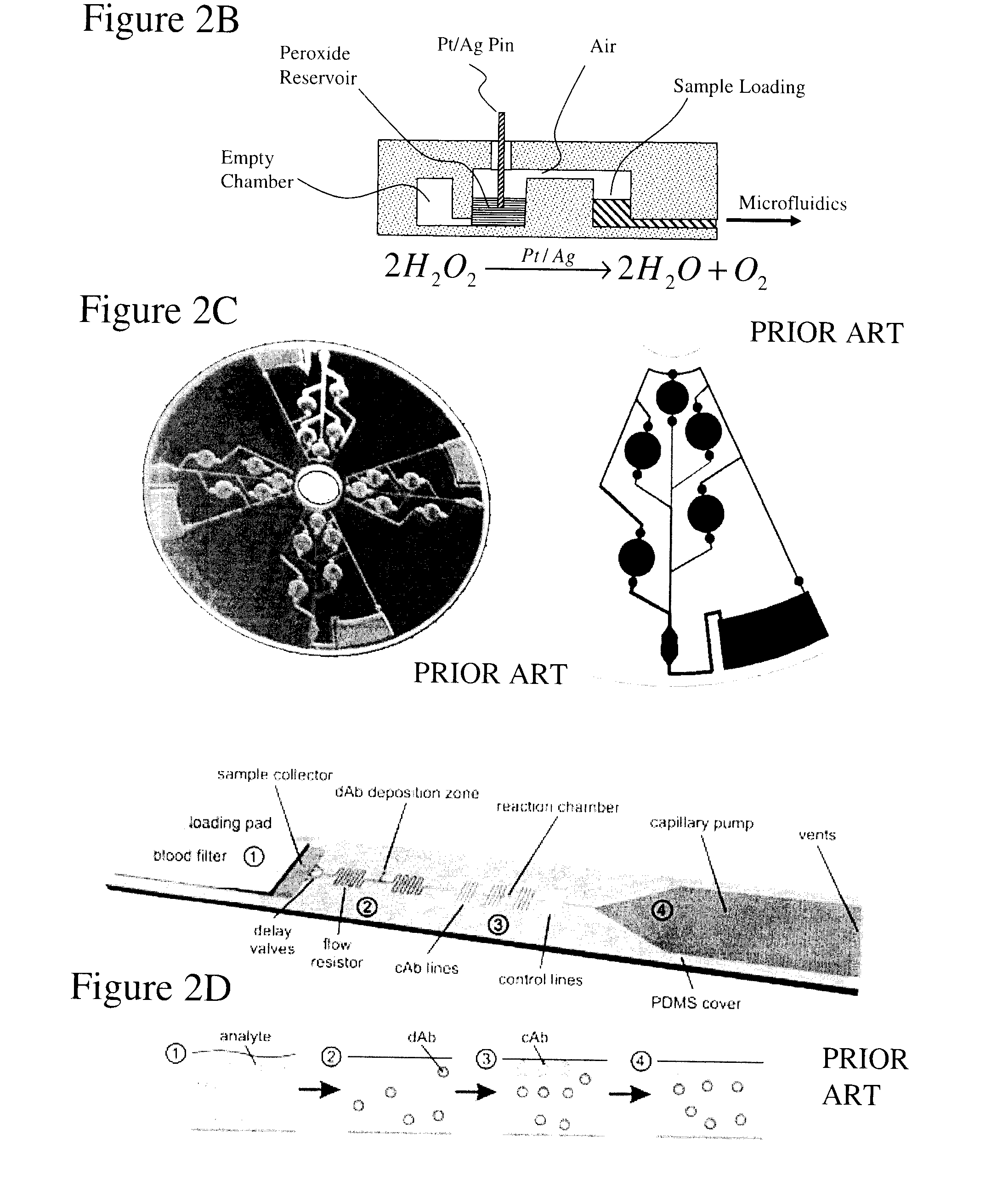Method and system for pre-programmed self-power microfluidic circuits
a microfluidic circuit and pre-programmed technology, applied in the field of microfluidic systems, can solve the problems of complex peripheral equipment, difficult to implement as low cost, robust and portable point-of-care systems, and antibodies that are not efficient at capturing bacteria
- Summary
- Abstract
- Description
- Claims
- Application Information
AI Technical Summary
Benefits of technology
Problems solved by technology
Method used
Image
Examples
Embodiment Construction
[0080]The present invention is directed to microfluidic systems and more particularly to pre-programmed self-powered microfluidic systems employing capillary elements.
[0081]The ensuing description provides exemplary embodiment(s) only, and is not intended to limit the scope, applicability or configuration of the disclosure. Rather, the ensuing description of the exemplary embodiment(s) will provide those skilled in the art with an enabling description for implementing an exemplary embodiment. It being understood that various changes may be made in the function and arrangement of elements without departing from the spirit and scope as set forth in the appended claims.
[0082]{AMEND FOR STANDARD TERMS IN SPECIFICATION} A “microfluidic circuit” (MICFLIC) as used herein and throughout this disclosure, refers to a capillary action based circuit employing microfluidic capillary structures which is self-powered and self-regulating through the designed performance of the microfluidic elements...
PUM
 Login to View More
Login to View More Abstract
Description
Claims
Application Information
 Login to View More
Login to View More - R&D
- Intellectual Property
- Life Sciences
- Materials
- Tech Scout
- Unparalleled Data Quality
- Higher Quality Content
- 60% Fewer Hallucinations
Browse by: Latest US Patents, China's latest patents, Technical Efficacy Thesaurus, Application Domain, Technology Topic, Popular Technical Reports.
© 2025 PatSnap. All rights reserved.Legal|Privacy policy|Modern Slavery Act Transparency Statement|Sitemap|About US| Contact US: help@patsnap.com



